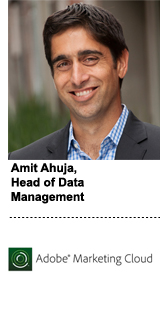 Adobe’s initial move to upgrade its demand-side platform (DSP), Adobe Media Optimizer, culminated Wednesday in the launch of its new programmatic self-serve platform.
Adobe’s initial move to upgrade its demand-side platform (DSP), Adobe Media Optimizer, culminated Wednesday in the launch of its new programmatic self-serve platform.
The first wave of integrations to Adobe Marketing Cloud applications include data-management platform Adobe AudienceManager, Adobe Analytics and personalization tool Adobe Target.
Buyers who use Adobe’s DSP can source search, social and display inventory from most major exchanges and networks, including Google AdX, Rubicon, Facebook Exchange, OpenX, PubMatic, AppNexus and Microsoft Ad Exchange – with the addition of AOL and Index Exchange.
Adobe recently rolled out an Audience Marketplace where buyers can benefit from second-party data pooling, but “we don’t sell data through exchanges,” remarked Amit Ahuja, head of data management for Adobe.
“We are acting as a software clearinghouse and transaction platform,” Ahuja added, “where buyers can transparently view the cost of media and where sellers can manage their business on our platform.”
Specific to TV publishers, broadcasters using video sell-side platform Adobe Primetime now have a direct connection to Adobe AudienceManager for segmenting, forecasting and yield optimization.
“TV is a massive area of focus for us,” Ahuja said. “Sometimes people tend to overlook the massive number of dollars moving through there, but if you look at our Primetime business, it’s 100% focused on how we enable the transition for sellers to digital and over-the-top, including the creative.”
Adobe has gained sell-in among premium TV publishers like NBCUniversal for Adobe’s Primetime business, but its buy-side business still has an upward battle bringing its DSP to market.
Adobe’s historically search-centric Media Optimizer is still scaling display and there are questions about whether the DSP can compete with incumbent programmatic platforms and DSP/DMP hybrids like MediaMath and Turn.
“Right now I’m having a hard time figuring out where the DSPs are differentiating themselves,” said Richard Joyce, senior analyst for Forrester. “There will probably will be a time where we start to see the marketing clouds tell a better story about why it’s beneficial to also use the DSP aspect of their offering within the same system, but for now, I don’t think anyone’s buying into it.”
Joyce added that Adobe is late to the market with its programmatic DSP, but its differentiation around video and dynamic creative optimization with the acquisition of Tumri could be compelling.
Joyce said Adobe’s stack could strengthen its position since it mixes creative tools with marketing and ad technology.
“The reason why a lot of existing DSPs started pushing toward a digital marketing hub,” Joyce added, “was because of the idea that you were bidding against yourself if you used multiple DSPs, not being able to control reach or frequency across various platforms.”
Adobe was arguably one of the first marketing clouds to merge paid media with a data offering, analytics and creative.












